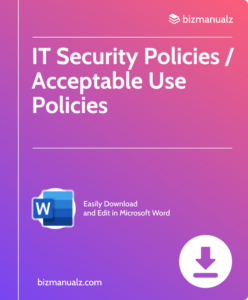CIO Digital Security Solutions

Are you concerned about the security of your digital assets? You’re not alone. With the ever-growing threat of cyber attacks, protecting your data and systems has become a top priority for companies of all sizes. In this article, we will explore the latest digital security solutions that every CIO should know about to stay ahead of potential threats. CIO Digital Security Solutions.
What is a CIO?
A CIO, or Chief Information Officer, is a vital executive who holds responsibility for overseeing the management, implementation, and security of an organization’s information technology and digital assets.
The CIO is in charge of the technological infrastructure, digital security solutions, and ensuring that IT systems are aligned with the organization’s objectives and goals.
What are the Responsibilities of a CIO?
The duties of a CIO include:
- Supervising an organization’s digital security, IT infrastructure, and technological advancements.
- Aligning technology with business objectives.
- Ensuring data privacy and compliance.
- Managing IT teams and budgets.
What are the Key Challenges Faced by CIOs?
As the role of the Chief Information Officer (CIO) continues to evolve in today’s digital landscape, so do the challenges they face. In this section, we will discuss the key challenges that CIOs encounter in their efforts to keep their organizations secure and technologically advanced.
From managing the complexities of digital transformation to ensuring data security and navigating budget constraints, CIOs must tackle a range of obstacles in order to successfully lead their companies into the digital age. Let’s dive into these challenges and explore potential solutions for CIOs.
1. Managing Digital Transformation
- Evaluate Current State: Assess existing processes, technologies, and capabilities to identify areas that require transformation.
- Set Clear Objectives: Define specific goals and outcomes to be achieved through the process of managing digital transformation.
- Develop a Roadmap: Create a detailed plan outlining the steps, timeline, and resources required for successful implementation.
- Secure Leadership Buy-In: Obtain support and commitment from key stakeholders to ensure alignment with organizational objectives.
- Implement Agile Methodologies: Embrace agile practices to adapt to evolving business needs and technological advancements.
2. Ensuring Data Security
- Evaluate current data security measures to identify strengths and weaknesses.
- Implement encryption protocols to safeguard sensitive information.
- Establish access controls and authentication processes for data protection.
- Regularly update security software and firewalls to mitigate potential risks.
3. Budget Constraints
- Assess the Current Budget: Review the existing budget and identify areas where 3. budget constraints are most impactful.
- Prioritize Security Needs: Determine critical security requirements and allocate budget accordingly.
- Explore Cost-Effective Solutions: Research cost-efficient digital security options that align with the available budget.
- Implement Risk-Based Approach: Focus resources on addressing high-risk areas to maximize security within 3. budget constraints.
- Seek Vendor Collaboration: Engage with security solution providers for flexible payment plans or tailored packages.
Despite budget constraints, CIOs can optimize security measures by prioritizing needs, exploring cost-effective solutions, and seeking collaborative vendor partnerships.
Why is Digital Security Important for CIOs?
As the role of Chief Information Officer (CIO) continues to evolve, so does the importance of digital security. In today’s digital landscape, protecting sensitive data and maintaining business continuity are crucial for any organization’s success.
In this section, we will discuss the significance of digital security for CIOs and the essential sub-sections that encompass it. These include protecting sensitive data, maintaining business continuity, and meeting compliance requirements. By understanding these key aspects, CIOs can effectively prioritize and implement digital security solutions for their organization.
1. Protecting Sensitive Data
- Evaluate Data: Identify all forms of sensitive data within the organization, including customer information, financial records, and intellectual property.
- Access Control: Implement strict access controls and user authentication measures to limit unauthorized access to sensitive data.
- Encryption: Utilize robust encryption methods to protect sensitive data both at rest and in transit, safeguarding it from unauthorized disclosure.
- Data Backup: Regularly back up sensitive data to secure locations to ensure its availability in the event of a security breach or data loss.
2. Maintaining Business Continuity
- Assess current business processes and their dependencies.
- Identify critical functions and resources necessary for maintaining business continuity.
- Develop a continuity plan for key operations to ensure smooth functioning.
- Implement backup systems and redundancies for essential technology and data to prevent disruptions.
- Train employees on continuity protocols and procedures to effectively handle any unexpected situations.
3. Meeting Compliance Requirements
- Evaluate Regulatory Standards: Identify and assess relevant industry regulations and legal requirements applicable to the organization’s operations.
- Internal Compliance Review: Conduct a thorough review of current policies and procedures to ensure they align with industry regulations and standards.
- Gap Analysis: Identify any gaps between current practices and compliance requirements and develop a plan for improvement.
- Implement Necessary Changes: Make necessary updates to internal processes, technology, and security measures to meet compliance standards.
- Training and Education: Provide comprehensive training and education to employees to ensure understanding and adherence to compliance requirements.
What are the Different Types of Digital Security Solutions?
In today’s digital age, the protection of sensitive information is of utmost importance for any organization. This is where digital security solutions come into play. There are various types of solutions that cater to different aspects of security, each with its own unique features and benefits.
In this section, we will explore the different types of digital security solutions available, including network security, endpoint security, cloud security, and data encryption. By understanding the different options, organizations can determine which solutions best fit their specific needs and concerns.
1. Network Security
- Evaluate Current Network Security: Assess the current state of the network security infrastructure, including firewalls, intrusion detection systems, and access controls.
- Identify Vulnerabilities: Regularly conduct vulnerability assessments and penetration testing to identify any weaknesses in the network.
- Implement Security Measures: Deploy encryption, VPNs, and multi-factor authentication to protect network traffic and control access.
- Train Employees: Educate employees on how to recognize phishing attempts, create strong passwords, and follow security policies.
2. Endpoint Security
- Evaluate the existing measures for endpoint security to identify any strengths and weaknesses.
- Conduct a thorough assessment of all devices and endpoints connected to the network.
- Implement security protocols to address any vulnerabilities and strengthen defenses.
- Provide training to employees on best practices for endpoint security to ensure compliance and proactively prevent threats.
In 1987, the first known ransomware attack targeted healthcare systems, encrypting files and demanding payment. This event marked the beginning of a new era in cyber threats.
3. Cloud Security
- Evaluate the current security measures of the cloud to identify its strengths and weaknesses.
- Conduct a thorough risk assessment to gain an understanding of potential threats and vulnerabilities.
- Implement robust authentication and access controls to protect cloud data and resources.
- Consistently monitor and update cloud security protocols and configurations to address emerging cyber threats.
4. Data Encryption
Data encryption is an essential component of digital security, which involves converting data into a code to prevent unauthorized access. CIOs utilize data encryption to protect sensitive information, including customer details and financial records. This technique guarantees that even if data is intercepted, it remains unreadable without the encryption key.
Implementing strong data encryption measures is in line with industry best practices for safeguarding organizational assets and complying with regulations.
How Can CIOs Implement Digital Security Solutions?
As a CIO, it is your responsibility to ensure that your company’s digital assets are protected from cyber threats. In this section, we will discuss how you can implement digital security solutions to safeguard your organization.
We will begin by assessing your current security measures and identifying any potential vulnerabilities. Then, we will delve into the steps of implementing effective security protocols and training your employees on best practices for maintaining digital security. By the end of this section, you will have a comprehensive understanding of how to strengthen your company’s digital security.
1. Assessing Current Security Measures
- Reviewing existing security protocols and technologies
- Conducting comprehensive security audits and assessments in order to accurately assess the current security measures
- Identifying potential vulnerabilities and weaknesses in the current security infrastructure for further evaluation
- Evaluating the effectiveness of current security measures in mitigating cyber threats and determining areas for improvement
2. Identifying Vulnerabilities
- Conduct thorough vulnerability assessments across all digital systems and networks.
- Identifying Vulnerabilities: Identify potential weak points in software, hardware, and infrastructure.
- Analyze and prioritize identified vulnerabilities based on their potential impact.
- Implement proactive measures to address and mitigate the vulnerabilities, ensuring comprehensive security coverage.
3. Implementing Security Protocols
- Assess current security measures to identify strengths and weaknesses.
- Conduct a thorough analysis of potential vulnerabilities in the existing system.
- Implementing Security Protocols by deploying robust authentication and access control measures.
- Train employees on security best practices to ensure compliance and awareness.
Pro-tip: Regularly update security protocols to adapt to evolving cyber threats and technological advancements.
4. Training Employees on Security Best Practices
- Educate employees about common security threats and best practices.
- Conduct regular training sessions on identifying phishing attempts and malware.
- Encourage the use of strong passwords and multi-factor authentication.
- Teach employees how to secure company devices and data.
Did you know? Over 90% of successful cyberattacks are caused by human error, emphasizing the crucial importance of training employees on security best practices.
Frequently Asked Questions

What is CIO Digital Security Solutions?
CIO Digital Security Solutions is a comprehensive digital security service designed for Chief Information Officers (CIOs) to protect their organization’s data, networks, and devices from cyber threats and attacks.
What types of services are included in CIO Digital Security Solutions?
CIO Digital Security Solutions offers a wide range of services, including network security, data encryption, mobile device management, vulnerability assessments, and threat intelligence.
How can CIO Digital Security Solutions benefit my organization?
CIO Digital Security Solutions can benefit your organization by providing a proactive approach to cybersecurity, reducing the risk of data breaches and cyber attacks, and ensuring compliance with industry regulations.
Do I need to have a dedicated IT team to use CIO Digital Security Solutions?
No, you do not need to have a dedicated IT team to use CIO Digital Security Solutions. Our team of experts will work closely with your organization to provide tailored solutions to fit your specific needs.
Is CIO Digital Security Solutions suitable for small businesses?
Yes, CIO Digital Security Solutions is suitable for businesses of all sizes. Our solutions can be customized to fit the needs and budget of small businesses while providing the same level of security as larger organizations.
How can I get started with CIO Digital Security Solutions?
To get started with CIO Digital Security Solutions, you can contact our team for a consultation and assessment of your organization’s security needs. From there, we can create a customized plan to implement our services and protect your organization’s digital assets.
















Leave a Reply